- Full-cycle recruiting means managing every step of the hiring process, from job planning to onboarding.
- It improves speed, candidate experience, and hiring consistency, especially when done by a dedicated recruiter or small team.
- Success depends on structured steps: prepare, source, screen, select, hire, and onboard.
- Tools, metrics, and manager alignment are key to scaling your hiring process effectively.
- Challenges like recruiter overload or skill gaps can be overcome with systems, training, and clear ownership.
If you're struggling to fill roles quickly without sacrificing quality, you’re not alone. Disconnected processes, inconsistent communication, and long time-to-hire cycles can cost you top candidates and slow down your team’s momentum. That’s where full-cycle recruiting helps, by giving you end-to-end control over the entire hiring journey.
We understand that managing the entire hiring process can feel overwhelming, especially when trying to scale your team efficiently while maintaining high-quality standards.
Let’s start with what full-cycle recruiting actually means and why it’s worth your attention.
What is Full Cycle Recruiting?
Full-cycle recruiting refers to managing every stage of the hiring process, from job planning all the way to onboarding. Unlike fragmented models where separate teams handle sourcing, interviewing, and onboarding, this approach gives one recruiter or a tightly coordinated group complete ownership of the entire cycle.
This means you’re not just attracting candidates, you’re building a seamless experience that aligns with your business goals and hiring timelines.
With a clear understanding of the process, let’s look at why full-cycle recruiting is so valuable for your team.
Why Full Cycle Recruiting Matters
By centralizing ownership, full-cycle recruiting eliminates bottlenecks, shortens time-to-hire, and ensures that candidates have a consistent, high-quality experience. Recruiters stay aligned with hiring managers throughout, leading to better-fit hires and fewer last-minute surprises.
It also promotes accountability. When one person or team is responsible for outcomes from start to finish, hiring becomes more intentional and outcome-driven.
These benefits matter even more when you’re scaling teams or competing for high-demand talent, because speed and consistency can make all the difference.
To unlock those advantages, you need to understand the essential steps in the full cycle model.
The Six Core Steps of Full Cycle Recruiting
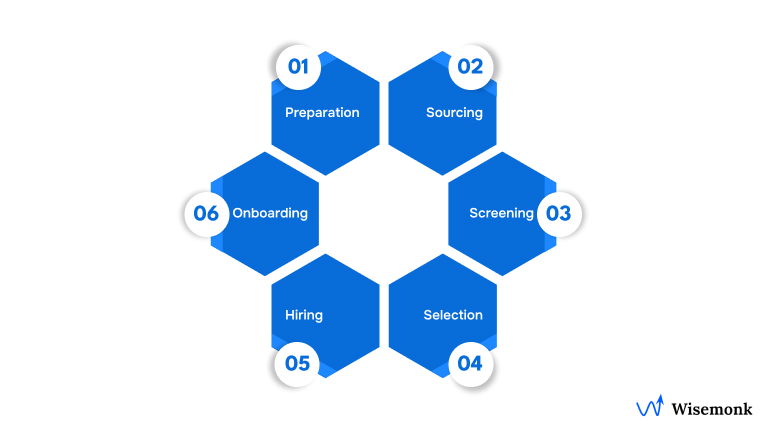
Here’s a streamlined view of each step involved in the full cycle hiring process:
- Preparation
Define the role clearly, align with the hiring manager, and build a compelling job description. Set expectations on timelines and success metrics. - Sourcing
Use job boards, referrals, social platforms, and recruiting networks to attract qualified candidates. Build a healthy pipeline, not just a shortlist. - Screening
Conduct resume reviews, phone interviews, and pre-assessments. Look beyond skills, evaluate communication, values alignment, and long-term fit. - Selection
Use structured interviews, panel discussions, and scoring rubrics to compare candidates fairly. Always align your evaluations with role requirements. - Hiring
Move fast with offer letters, compensation negotiation, and approvals. Communication during this phase makes or breaks your candidate acceptance rate. - Onboarding
Ensure day-one readiness with tech setup, introductions, and clear expectations. Follow up regularly during the first 30–60 days to build engagement.
Each step builds on the previous one, so consistency is key to long-term hiring success.
Next, let’s cover a few best practices to help you sharpen each stage of the process.
Best Practices That Elevate Your Hiring
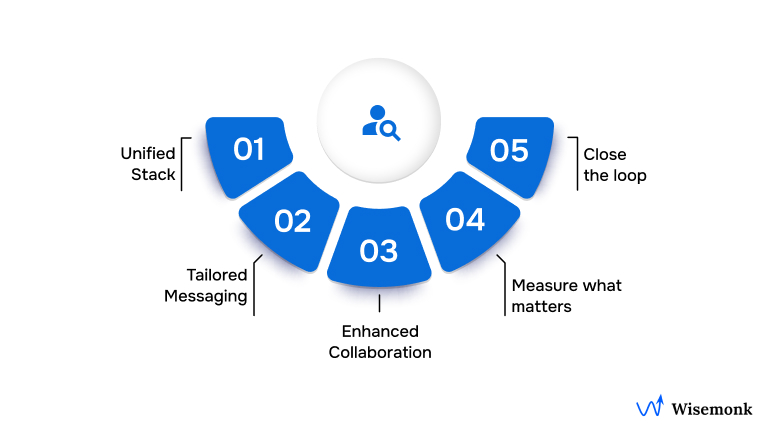
To make full-cycle recruiting work at scale, you need to embed systems and tools that support both your team and your candidates.
- Use a unified tech stack: Integrate your ATS, sourcing tools, and HR software to streamline handoffs and centralize data.
- Personalize candidate communication: Use email templates, but keep interactions human. Timely, thoughtful updates improve your close rate.
- Strengthen hiring manager collaboration: Align early on goals, timelines, and feedback expectations to avoid misalignment later.
- Measure what matters: Track time-to-fill, interview-to-offer ratio, offer acceptance rate, and quality of hire.
- Close the loop: Collect post-hire feedback from candidates and hiring managers to improve future cycles.
These practices reduce friction and help you adapt your approach as needs evolve.
Still, even a great system has pitfalls; let’s explore the challenges you should watch out for.
Common Challenges in Full Cycle Recruiting
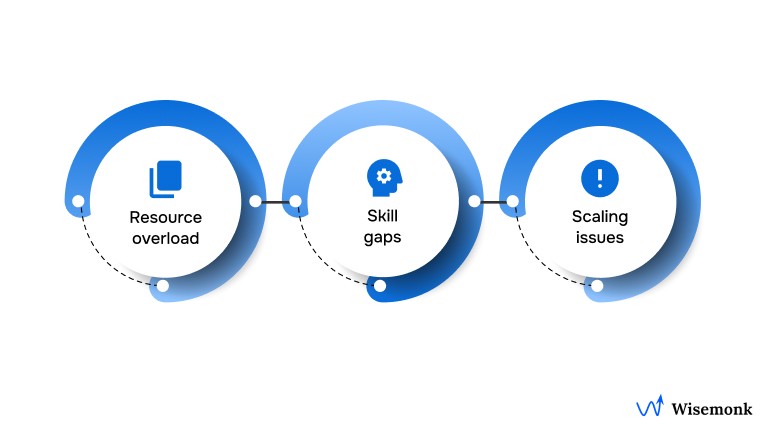
While full-cycle recruiting offers control, it also demands a wide skill set. Recruiters must balance sourcing, interviewing, closing, and onboarding—all while managing expectations from multiple stakeholders.
- Resource overload: Managing everything end-to-end can stretch bandwidth, especially during hiring spikes.
- Skill gaps: Not every recruiter is strong in every area; gaps in closing, screening, or onboarding can affect outcomes.
- Scaling issues: As hiring grows, a single recruiter model may need to shift to a more specialized team structure.
Recognizing these friction points early helps you build a flexible, future-proof recruiting function.
Let’s now break down a practical action plan you can start using today.
How to Make Full Cycle Recruiting Work for You
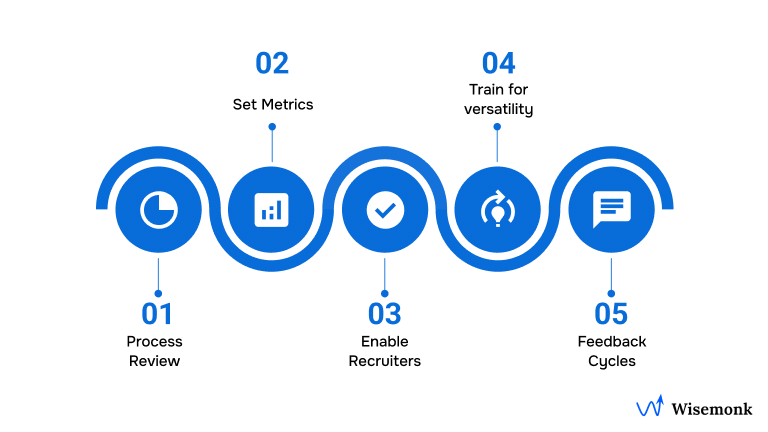
A successful full-cycle recruiting strategy starts with clarity and builds with consistency. Here’s how you can get started:
- Audit your current hiring flow
Identify bottlenecks, inefficiencies, or gaps in ownership across the pipeline. - Define success metrics
Choose 3–4 KPIs to track consistently across all roles and stages. - Equip recruiters with the right tools
Invest in scheduling software, interview scorecards, and candidate engagement platforms. - Train for versatility
Build cross-functional recruiting capabilities across sourcing, interviewing, and onboarding. - Create feedback loops
Hold post-hire retrospectives to assess what worked and where to adjust.
This approach transforms your recruiting function from reactive to strategic.
Before we close, here’s how to bring all this together with the right partner.
Conclusion
When you manage the full hiring cycle, from job planning to onboarding, you get tighter control, better hires, and stronger outcomes. But that control only works if your systems, processes, and support partners are aligned.
If you're looking to scale your recruiting operations with confidence, while staying compliant, organized, and efficient, Wisemonk can help. Our global workforce solutions are designed to support your hiring needs end-to-end, helping you focus on what matters most: building exceptional teams. Book a free consultation with our team to streamline your recruiting process.
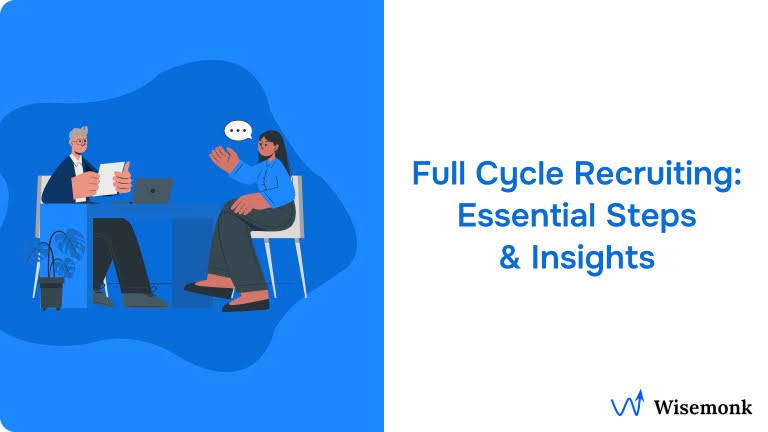





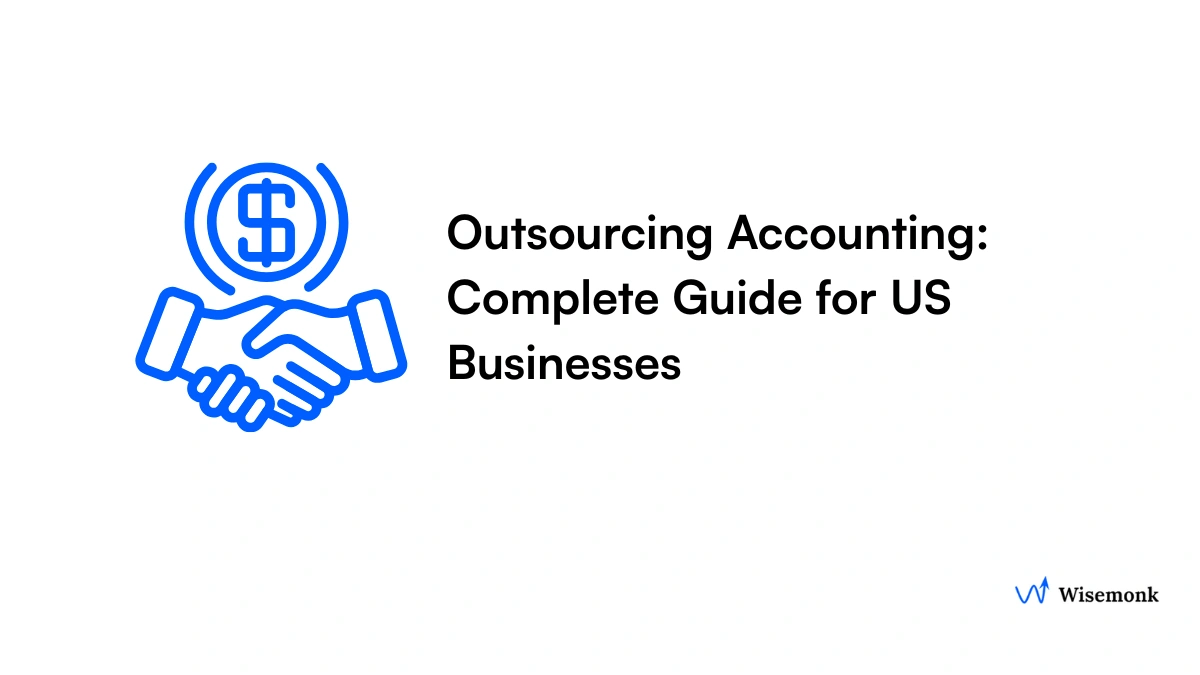
%20(3).webp)